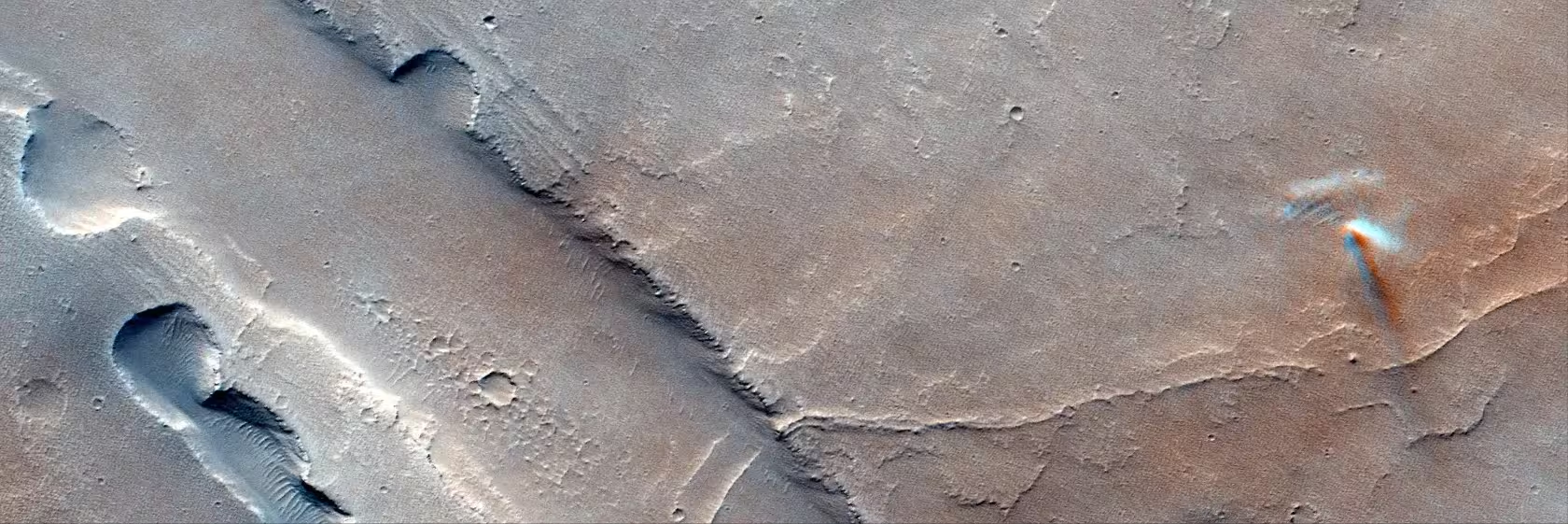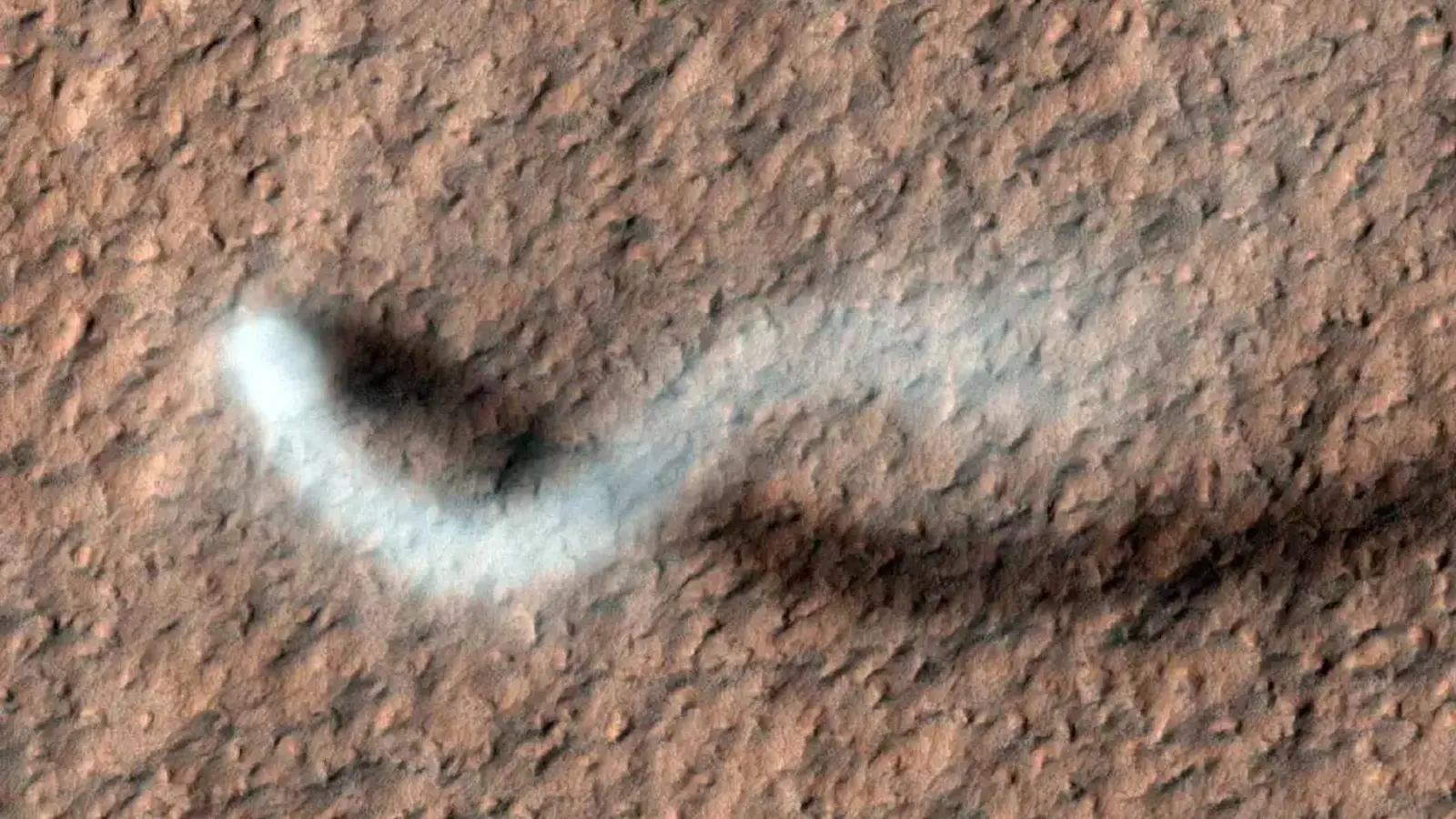4 Minutes
New analyses of more than a thousand Martian dust devils show that wind speeds on Mars can be far stronger than previously assumed. By combining images from two European orbiters, researchers mapped the movement of dust across large swaths of the planet and found gusts reaching as high as 160 km/h—powerful for Mars, even if the thin atmosphere keeps their force different from similar winds on Earth.
How orbiters tracked invisible winds
Mars Express and the ExoMars Trace Gas Orbiter were not designed to be wind-measuring instruments, yet both spacecraft have proven remarkably versatile. Scientists used the orbiters' cameras in an inventive way: the instruments capture red- and blue-filtered images a short time apart. By comparing these successive frames and tracking how far dust shifted between them, researchers could infer both the speed and direction of near-surface winds.
Combining observations from the two European Space Agency (ESA) missions produced a catalog of 1,039 dust-devil events. That dataset offered the first large-scale, planet-wide picture of wind patterns associated with dust devils across Mars, something that simple, ground-based weather stations on the planet cannot provide.
What the numbers tell us—and why they matter
The study reports wind speeds within dust devils that can reach up to 160 km/h (about 100 mph). On Earth that would be storm-level wind, but Mars’ atmosphere is roughly 1% as dense as Earth’s, so the lifting effect and mechanical force differ. Even so, winds of that magnitude are capable of lofting dust particles and fueling regional or planet-encircling dust storms.

Valentin Bickel, lead author from the University of Bern, noted: 'Dust devils make otherwise invisible winds visible. By measuring their speed and direction we've begun to map winds across the Martian surface in ways that weren't possible before because global data were lacking.'
These findings matter for both robotic and future human missions. Dust is the Mars atmosphere’s most variable and mission-critical component: it can coat solar panels, reduce power output, and even end operations. The risk is not hypothetical—past missions have suffered when dust blocked sunlight or degraded instruments.
From single-point weather stations to global wind mapping
Before this work, local meteorological measurements came mainly from landers and rovers, each providing weather readings from a single spot. Those data are invaluable but patchy. The orbit-based approach scales that knowledge globally, revealing patterns and extremes that help planners forecast dust activity and design more resilient missions.
Colin Wilson, an ESA project scientist, explained the technique succinctly: 'When our cameras take images, reds and blues are recorded a bit apart in time. By seeing how much dust has moved between those two images we can calculate wind speed. It's very exciting.'
Implications for future missions
Understanding wind and dust behavior on Mars supports better mission planning in several ways: predicting solar power availability for landers and rovers; designing thermal and mechanical protection for equipment; and assessing hazards for eventual human operations. Since dust devils can be localized but also seed larger storms, having a statistical, global view of their speeds and distribution is a major step forward.
The full analysis was published in Science Advances and illustrates how creative use of existing orbital imaging can open new windows into Martian climate dynamics. Imagine mission planners using these maps to choose landing sites or to schedule critical activities to avoid peak dust times—this study brings that kind of operational insight one step closer.


Leave a Comment